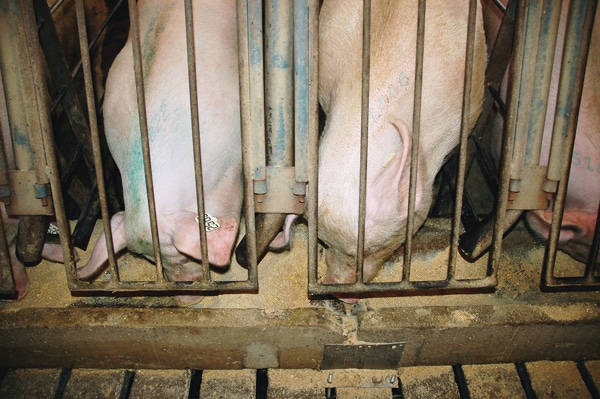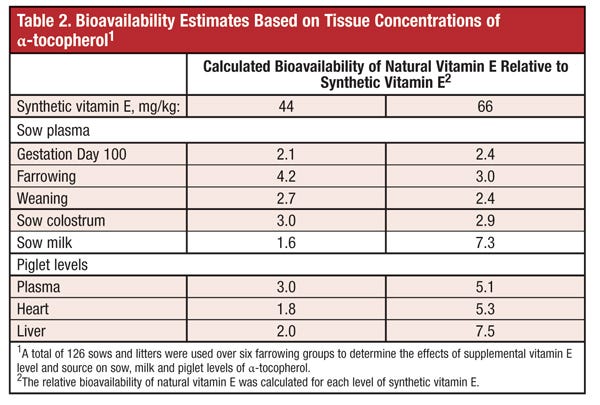To compare the value of feeding natural vs. synthetic vitamin E, Kansas State University (KSU) researchers used 126 PIC gilts and sows and their litters to determine the effect of vitamin E level and source on sow plasma, milk and piglet tissue concentrations of α-tocopherol (a naturally occurring compound found in a variety of foods that provides concentrations of vitamin E).
December 15, 2012

To compare the value of feeding natural vs. synthetic vitamin E, Kansas State University (KSU) researchers used 126 PIC gilts and sows and their litters to determine the effect of vitamin E level and source on sow plasma, milk and piglet tissue concentrations of α-tocopherol (a naturally occurring compound found in a variety of foods that provides concentrations of vitamin E).
Six treatments included two levels of dl-α-tocopherol acetate (synthetic vitamin E) at 20 and 30 IU/lb. (40,000 and 60,000 IU/ton) and four levels of d-α-tocopherol acetate (natural vitamin E) at 5, 10, 15 and 20 IU/lb. (10,000, 20,000, 30,000 and 40,000 IU/ton).
From breeding through Day 69 of gestation, sows were fed 4.5 lb./day of a diet containing 40% distiller’s dried grains with solubles (DDGS), 0.3 ppm added selenium and no added vitamin E. Vitamin E treatments were fed from Day 70 of gestation through weaning at 21 days of age.
Plasma was collected from sows on Day 69 and Day 100 of gestation, at farrowing and at weaning. Colostrum was collected at Day 1 of lactation. Milk samples were collected at weaning. All plasma, milk and tissue samples from six sows and litters per treatment were analyzed for α-tocopherol (Table 1).

Results showed a trend for decreased average weaning weight in litters of sows fed 20 IU/lb. synthetic vitamin E, which is likely due to the difference in weaning age between the two vitamin E-treated groups and the differences in birth weights. No other differences in litter performance were observed.
As natural vitamin E (d-α-tocopherol acetate) increased in sow diets, concentrations of sow plasma, colostrum, milk and piglet levels of α-tocopherol increased compared with feeding similar levels of synthetic vitamin E
(dl-α-tocopherol acetate).
Sows fed diets with 20 IU/lb. natural vitamin E had greater plasma, colostrum and piglet plasma concentrations of α-tocopherol than sows fed the 20 IU/lb. of synthetic vitamin E. Sows fed 30 IU/lb. synthetic vitamin E also had greater plasma concentrations of α-tocopherol at weaning than sows fed 20 IU/lb. synthetic vitamin E.
This data suggests that the bioavailability of natural vitamin E is greater than the standard value of 1.36 for natural vitamin E relative to synthetic vitamin E, and that sows can reach the same nutritional needs at lower inclusion rates (Table 2). The bioavailability comparison is a measure of how much synthetic vitamin E is required to replace natural vitamin E. The lower inclusion rate associated with natural vitamin E can lower diet cost, depending on the current costs and product availability.

Researchers: N.W. Shelton, J.L. Nelssen, M.D. Tokach, S.S. Dritz, R.D. Goodband and J.M. DeRouchey, Kansas State University; H. Yang, ADM Alliance Nutrition, Glencoe, MN; and D.C. Mahan, The Ohio State University. For more information, contact Shelton by phone (636) 343-4111, ext. 1294 or e-mail [email protected].
You May Also Like



